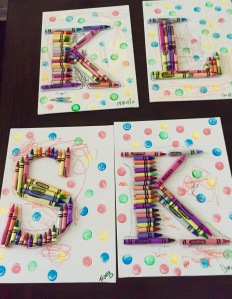
Hello everyone! Today, I am so fortunate to share with a very valuable post on how we can help our kids become Bicultural. I talk about being bilingual, but being bicultural is just as if not more important as it helps people not only understand the language, but understand how amazing other cultures can be. Please read her post and enjoy! Don’t forget to follow her on her links at the end of the post.
Beyond Bilingual: 7 Ways to Help Your Child Become Bicultural
Foreign language teachers often talk about the importance of learning about culture when studying a language. For students, it’s often the most exciting part of a class! Listening to the music, eating the food, and participating in the celebrations of a particular culture make language study exciting and can entice even the most reticent of learners to participate. Learning about the culture may in fact be just as important as learning the language. The goal is to inspire students to not only become bilingual, but also bicultural, or at the very least, respectful of the culture. Below I examine the true meaning of biculturalism and highlight 7 awesome strategies you can use to guide your children on the path of bicultural education.
What Is Biculturalism?
Biculturalism involves the adaptation of two cultures into a mix that will be unique to an individual. It occurs when a person has cultural behaviors such as language use, choice of friends, media preferences, cultural practices, values and identifications that are influenced by two distinct cultures. So, it doesn’t only mean behaving in ways that are influenced by two cultures (i.e. speaking Chinese and English), but holding values from both cultures (such as strong family loyalty as well as an independent spirit) and identifying with both cultures (like identifying as “Mexican-American” as opposed to just Mexican or just American).
What Are The Benefits Of Biculturalism?
Although we may be somewhat unfamiliar with the terminology, the benefits of biculturalism have long been known. People who are bicultural feel comfortable in both settings, use coping strategies from both cultures, are able to interact with people from both cultures and can even act as intermediaries. They have a greater number of social networks, they are aware of cultural differences and they can enjoy the richness of the life of multiple cultures. Research has even demonstrated that bicultural individuals are more likely to display advanced reasoning (e.g. seeing both sides of an argument and understanding multiple perspectives on complex social issues) and that they are characterized by superior creativity and professional success.*
How Do We Help Our Children Become Bicultural?
Many believe that becoming bicultural is an effect of the circumstances that surround a family. If a family is in a city with a large number of individuals who share the same heritage culture, they will maintain their culture more easily. Therefore, if they are in an area where they are isolated from their culture, they will most likely adapt to the surrounding culture. However, the family does not simply act as a conduit for the environmental and cultural influences at large. Rather, parents can actively decide how they want their children to acculturate.
Parents can choose to raise their children one of three ways: they can raise their children in a way in which both the heritage and receiving cultural streams are emphasized and valued, they can emphasize the heritage culture more, or they can actively encourage their children to adapt to the mainstream culture. If you want to ensure your child’s biculturalism, then the first option is the one for you.
If you are in an area where your heritage culture is present, then you will have a lot of support from the community, and you can easily emphasize and integrate both cultures into your family life. However, if you are in an area that is devoid of your cultural heritage, then you will have to make a greater effort to teach your children about the customs, traditions, and other cultural markers of your heritage.
One of the most obvious ways of doing this is through language. However, as I said above, culture is more than language, and we must step out beyond in order for our children to learn about their roots. Here are a few ideas to help your child connect with your heritage culture:
- Read Authentic Books
Not only is reading essential for language learning, but it is one of the greatest ways in which we can transmit ideas, cultural norms and traditional stories to them. Reading together, especially from a very young age, can also create a strong bond and feelings of well-being between you and a child.
- Listen To Music & Explore Other Artistic Traditions
Music is an amazing cultural experience! Not only is it enjoyable, but it can emit feelings and thoughts in a way that no other medium can. But a culture’s artistic heritage is not limited to music; exploring dance, arts and crafts, sports and martial arts can all bring a sense of national, ethnic and cultural pride and understanding.
- Cook & Eat Traditional Foods
Food can truly be a part of who we are. The smells and flavors that emanate from a kitchen can create such strong memories! To this day, anytime I smell lemons I think of my Abuela, who had a lemon tree and used the fruit for everything from cooking to cleaning. Share the richness of your heritage through food with your children and not only will you be filling their bellies, but you will be creating memories.
- Seek Out Other Members Of Your Cultural Group
One of the best ways to connect with your culture is to spend time and create bonds with people who share the same heritage. Having family and friends with whom you can practice language and effectively model cultural characteristics with will be a great way for your children to learn. Making a space where it is not only acceptable, but actually encouraged to celebrate their heritage can make a big difference for children.
- Travel
For many people travelling “home” is not always possible. However, if you ever have the opportunity, showing your children where their roots lie will be an unforgettable experience that can really bond them with their heritage.
- Participate In Festivals & Celebrations
If you are in an area that holds festivals and celebrations that are meaningful to you, by all means participate! If you aren’t, but can travel to an area that has them (especially if you cannot go back to your country of origin) then I encourage this as well!
- Discuss & Teach Some Of The Important Beliefs & Cultural Norms
Having conversations with our children about our beliefs and norms is so very important. Teaching them wrong from right, teaching them manners, etc. starts at a young age. Don’t miss out on opportunities because you think they won’t understand, even from a very young age, they will always gather a lot from their conversations with you!
As parents wishing to raise bilingual children, It’s important to remember that bilingualism and biculturalism are not the same thing. We may speak to our children in different languages, but if we fail to present the culture in an authentic manner, our kids may miss out on the true depth and richness of our language and heritage. Even if the language you are teaching you children is not part of your heritage, always do your best to include culture into their learning. It’s the best method you have for creating an interest in others and for bringing up compassionate and caring children who will want to experience and explore the world.
We want to hear from you! Are you raising your children to be bicultural? How are you going about it? Let us know in the comments below.
About the Author
Keli Garcia Allen is a certified Spanish teacher and works as a Preschool teacher in a bilingual classroom. She is the Head of Content for Learn Safari and is currently working on Spanish Safari, a Spanish Learning game for children 5-9 years old. You can follow her and the rest of the team on their Website, Facebook, Instagram, or Twitter.
* https://www.psychologytoday.com/blog/life-bilingual/201304/advantages-being-bicultural






































